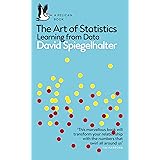tidyverse in r – Complete Tutorial
tidyverse in R, one of the Important packages in R, there are a lot of new techniques available maybe users are not aware of.
In this tutorial we are importing basic three packages tidyverse, lubridate and nycflights13 for the explanation.
Such tight competition is going around in the data science field, so data analysts should aware of all these kinds of latest techniques.
Load Package
First, we need to load basic three packages into R.
#install.packages("tidyverse")
#install.packages("lubridate")
#install.packages("nycflights13")
library(tidyverse)
library(lubridate)
library(nycflights13)Getting Data
Based on nycflights13 data, just load the data into R environment.
head(flights)

tidyverse in r
1. Create a new column basis count option
flights %>%
mutate(long_flight = (air_time >= 6 * 60)) %>%
View()You can create new column long flights based on above scripts.
Now need to count the number of long flights
flights %>%
mutate(long_flight = (air_time >= 6 * 60)) %>%
count(long_flight)The above two steps you can execute in a single line.
flights %>%
count(long_flight = air_time >= 6 * 60)Same way all different column count can calculate, one example is here.
flights %>%
count(flight_path = str_c(origin, " -> ", dest), sort = TRUE)2. Create a new column basis group by
You can create group by summary based on below script.
flights %>%
group_by(date = make_date(year, month, day)) %>%
summarise(flights_n = n(), air_time_mean = mean(air_time, na.rm = TRUE)) %>%
ungroup()3. Randomly Shuffle the data
Suppose you want to randomly slice the data with 15 rows, can execute the same basis below command.
flights %>%
slice_sample(n = 15)Using prop command also you can slice the data set.
flights %>%
slice_sample(prop = 0.15)4. Date column creation
In the original data set year, month and date contained as separate columns-based make_date command can create new date column.
flights %>%
select(year, month, day) %>%
mutate(date = make_date(year, month, day))5. Number Parsing
Suppose you want extract only numbers then you can you parse_number option.
numbers_1 <- tibble(number = c("#1", "Number8", "How are you 3"))
numbers_1 %>% mutate(number = parse_number(number))6. Select columns with starts_with and ends_with
You can select the columns based on start_with and end_with option, here is the example
flights %>%
select(starts_with("dep_"))
flights %>%
select(ends_with("hour"))
flights %>%
select(contains("hour"))This is one of the useful code for our day to day life.
7. case_when to create when conditions are met
Create a new columns when conditions are met. case_when is one of the handy tool for conditions identification.
flights %>%
mutate(origin = case_when(
(origin == "EWR") & dep_delay > 20 ~ "Newark International Airport - DELAYED",
(origin == "EWR") & dep_delay <= 20 ~ "Newark International Airport - ON TIME DEPARTURE",
)) %>%
count(origin)8. str_replace_all to find and replace multiple options at once
Every one aware about str_replace in string r pacakage, here we can execute replace multiple options at a once.
flights %>%
mutate(origin = str_replace_all(origin, c(
"^EWR$" = "Newark International", "^JFK$" = "John F. Kennedy International"
))) %>%
count(origin)9. Filter groups without making a new column
Filtering is one of the essential function for cleaning and checking data sets.
flights_top_carriers <- flights %>%
group_by(carrier) %>%
filter(n() >= 10000) %>%
ungroup()10. Extract rows from the first table which are matched in the second table
You can extract the row information’s based on str_detect function
beginning_with_am<- airlines %>%
filter(name %>% str_detect("^Am")) 11. Extract rows from the first table which are not matched in the second table
Same way you can remove row information’s from the data frame while using anti_join function
flights %>%
anti_join(airways_beginning_with_a, by = "carrier")12. fct_reorder to sort for charts creation
When you are creating graphs reordering one of the key function, tidyverse will handle such kind of situations.
airline_names <- flights %>%
left_join(airlines, by = "carrier")
airline_names %>%
count(name) %>%
ggplot(aes(name, n)) +
geom_col()
airline_names %>%
count(name) %>%
mutate(name = fct_reorder(name, n)) %>%
ggplot(aes(name, n)) +
geom_col()13. coord_flip to display counts more accurately
To change x and y axis and make a beautiful display
flights_with_airline_names %>%
count(name) %>%
mutate(name = fct_reorder(name, n)) %>%
ggplot(aes(name, n)) +
geom_col() +
coord_flip() 14. Generate all combinations using crossing
Like expand grid in R, you can create all possible combinations based on crossing function in tidyverse.
crossing(
customer_channel = c("Bus", "Car"),
customer_status = c("New", "Repeat"),
spend_range = c("$0-$10", "$10-$20", "$20-$50", "$50+"))15. Group by based on function
Write the function based on your requirements and group by accordingly.
summary <- function(data, col_names, na.rm = TRUE) {
data %>%
summarise(across({{ col_names }},
list(
min = min,
max = max,
median = median,
mean = mean
),
na.rm = na.rm,
.names = "{col}_{fn}"
))
}
flights_with_airline_names %>%
summary(c(air_time, arr_delay))
flights_with_airline_names %>%
group_by(carrier) %>%
summary(c(air_time, arr_delay))




